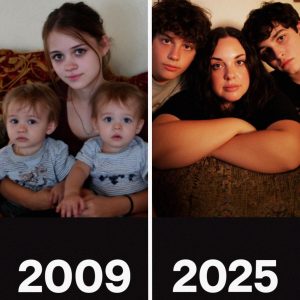Paragraph 1:
At first glance, the image appears deceptively ordinary: a plain white T-shirt lying flat, nothing flashy or complicated about it. It looks like the kind of object you’d barely notice on a laundry pile or draped over a chair. Yet this very simplicity is what allows it to become such a viral phenomenon. The internet has a way of taking everyday items and turning them into riddles that challenge how we see the world, and this shirt is no exception. What seems mundane at first becomes the center of a debate that reveals how perception, assumptions, and logic can clash when we’re confronted with something that feels familiar but is hiding a twist. Instead of a fashion item, it becomes a puzzle disguised as clothing—a subtle reminder that even the most ordinary objects can fool the eye.
Paragraph 2:
The puzzle begins with a question that sounds embarrassingly simple: How many holes do you see? It’s the kind of query that sparks instant confidence—almost insultingly easy, like a warm-up question before the real challenge begins. Most people glance at the shirt, make a quick estimate, and move on. But after a moment, a strange thing happens: the brain loops back, doubts itself, and begins to inspect the image again. What initially felt obvious becomes slippery. People start counting and recounting, trying to decide what qualifies as a hole and what doesn’t. The brief moment of certainty dissolves into uncertainty, turning a simple question into a surprisingly layered exercise in reasoning.
Paragraph 3:
To solve the puzzle, you have to pause and picture the shirt carefully, going beyond instinct and applying actual thought. That’s where the trick lies—most people don’t examine the details closely enough because they assume they already know what they’re looking at. But once you break the shirt apart conceptually, the logic becomes clearer. The correct answer is eight holes. This total feels unexpectedly high to most people, but once each opening is counted methodically, the number becomes entirely reasonable. The shirt isn’t trying to trick anyone; it’s our assumptions about what “counts” as a hole that create the confusion.
Paragraph 4:
The breakdown reveals the structure behind the surprise. First, there are the standard openings: two sleeves, one neck hole, and the bottom opening—all of which qualify as holes whether we normally label them that way or not. Then there are the tears: two visible holes on the front of the shirt. Each of these tears isn’t merely a single opening, because a hole that goes through one side must also create a corresponding hole on the opposite side. Just as punching through a sheet of paper makes two punctured surfaces, a torn T-shirt has both a front opening and a matching back opening. This is the step many people overlook—the idea that a “single” tear is actually two distinct holes when you consider the layers of fabric.
Paragraph 5:
All together, the tally becomes clear: two sleeve holes, one neck hole, one bottom hole, plus four torn openings (two in front and two in back), bringing the total to eight. This puzzle trips people up because we don’t instinctively include garment openings in our mental model of “holes,” even though they unquestionably meet the definition. And even when people count the tears, they usually stop at the two they can see, forgetting that the shirt is a three-dimensional object with both a front and a back. The brain defaults to visual shortcuts, assuming what you see is all there is. The puzzle exploits this instinct, inviting you to slow down and consider what lies beyond the surface.
Paragraph 6:
The result is a deceptively engaging mental challenge that has sparked spirited discussions and playful arguments across social media. Many people answer confidently only to revise their guess once or twice—or more—after a second look. It’s a reminder of how easily perception can be manipulated and how satisfying it feels to unravel a small mystery. Whether you guessed correctly or not, the puzzle works because it makes the familiar suddenly strange, prompting you to see something simple from a fresh perspective. And so the debate continues: when you looked at the shirt, how many holes did you count at first? And did your answer survive scrutiny? For many, the fun lies not just in getting it right but in the shared experience of being momentarily fooled by something as simple as a white T-shirt.





